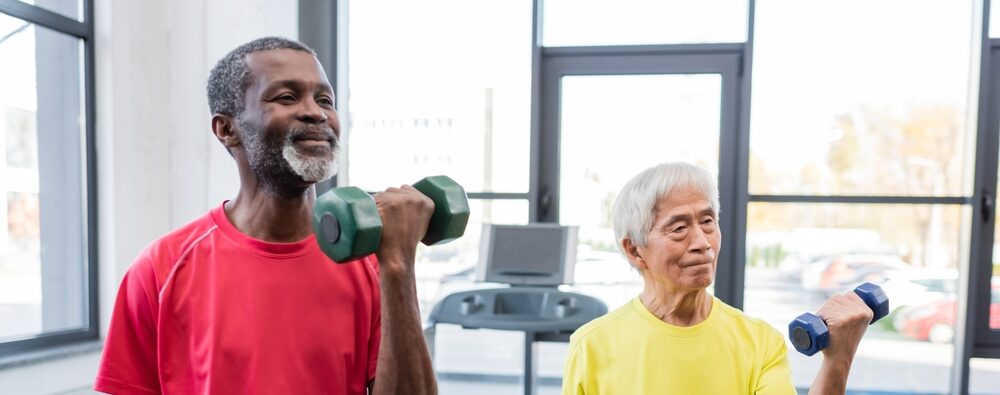What Is Orthopedic Therapy and How Does It Help Seniors?

What is orthopedic therapy?
Orthopedic therapy is a specialized kind of physical therapy that focuses on your bones, muscles, joints, tendons or ligaments. It’s very common to have some kind of orthopedic therapy after an illness or injury, or while recovering from an operation. It helps the body heal properly, improves strength and range of motion, and restores the function of your body.
Who provides orthopedic physical therapy?
Orthopedic therapists are physical therapists who specialize in rehabilitating patients with orthopedic conditions. They use specific tools and techniques to assess the extent or severity of the condition. They may teach the person how to use an assistive device such as crutches. And they may use modalities like heat, ice, ultrasound or electrical stimulation (aka e-stim) as part of a physical therapy program.
What kinds of orthopedic conditions will require therapy?
Orthopedic therapy focuses on the bony and soft tissue found in all areas of the body. You may have injured a joint during a fall or are feeling the wear and tear of overuse or of age. Seniors often need therapy after a knee or hip replacement, for golfers or tennis elbow, a frozen shoulder or herniated disc, lower back pain or arthritis. Other common conditions include:
Fractures – A broken bone, also known as a fracture, is a painful condition that requires medical attention to ensure that the bone mends properly. After the broken bone is set by a doctor, it’s immobilized, usually in a cast, to ensure it stays supported and correctly aligned as it heals. Orthopedic therapy focuses on learning how to use assistive devices such as a cane or crutches, and engaging in exercises that improve endurance and strengthen the muscles around the fracture site.
Muscle strains — Muscles and tendons are the thick bands of connective tissues that attach muscles to bones. A strain occurs when the muscles or tendons are overstretched or contracted because of a quick tear, twist or pull. A person may feel pain, weakness and/or muscle spasms because of a strain.
Ligament sprain — Ligaments are the thick cartilage that attach bone to bone. A ligament sprain can occur during a fall or other physical trauma that displaces the surrounding joint from its normal alignment. Sprains can range from a mild pull to a complete tear. The area around the sprain will often be swollen and bruised, and it can be painful to move.
In the case of muscle strain or ligament sprain, a physical therapist may require an X-ray or other imaging. This will determine the extent and severity of the injury, and how long rest will be needed for healing. Only after some swelling and pain has eased will physical therapy be of help. The therapist may show you specific stretches or movements to help the muscles and ligaments become healthy and supple again. You may also need to perform specific exercises to rebuild strength near the strain or sprain area.
Tendonitis — Tendons are the fibrous, flexible cords of tissue that connect muscles to bone in and around the joints of the body. They can be very small, such as the ones that enable movement in your fingers, to larger ones like the well-known Achilles tendon, which helps us stand and walk. When tendons are overused or injured, or when they become inflamed, as they do with arthritis, they can become stiff, tender and painful. The pain usually felt at the point where the tendon attaches — this inflammation and pain is known as tendonitis (aka tendinitis). A physical therapist may recommend manipulation and massage to help recover a full range of motion.
Bursitis — Bursa are the slippery sacs filled with fluid that are found between joints. There are about 150 of them throughout the body, and they function to decrease friction between joints when the two surfaces move. They can become inflamed or painful through repetitive overuse or prolonged pressure, and this condition is known as bursitis. The pain is commonly felt in the shoulders, knees, elbows or hips and is worse during and after activity. Rehabilitation depends on the type of bursitis you have and its severity. It ranges from icing and immobilization to surgery to remove the affected bursa. A physical therapist may suggest a brace, supportive exercises and stretches to help with recovery or possible flare-ups. He or she may also help correct problems with posture or movement that led to the condition in the first place.
What will I be doing during orthopedic therapy?
Most often, exercise is the main tool used during senior rehabilitation. A physical therapist may guide you through a program that works on any or all of the following:
- Strength
- Stretching and flexibility
- Range of motion
- Balance
- Functional mobility (e.g. getting up from a chair or picking up something off the floor)
- Endurance
- Plyometrics (jump training to enhance your strength and muscle control)
How do I find an orthopedic physical therapist?
A physical therapist who’s an expert in diagnosing and treating musculoskeletal conditions may have the letters “OCS” after their name, which stands for orthopedic clinical specialist. You can find a board-certified specialist by checking the American Physical Therapy Association website. Even if a physical therapist is not an OCS, they may still be trained in the appropriate therapies that will help with your rehabilitation. Just remember that while physical therapy may be challenging at times, it should never be painful.
If you have had surgery or an illness or injury where pain and other symptoms limit your ability to move around comfortably, check in with the rehabilitation center at Regency Oaks. Our team offers 5-Star-rated short-term rehabilitation services that include physical, occupational and speech therapies. You’ll meet highly qualified and compassionate people who will put you first, and have you feeling better in no time.




